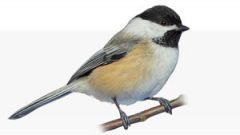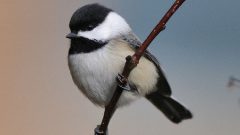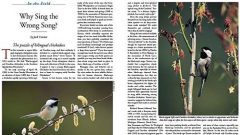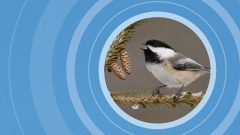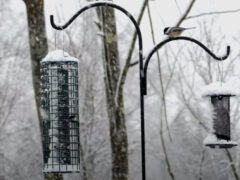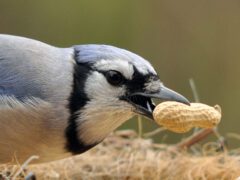Black-capped Chickadee Similar Species Comparison
Main SpeciesBlack-capped Chickadee
Adult
Small and compact, with a thin, short bill. Black cap and bib contrast with white cheeks, gray back and wings, and light buffy underparts.
© Scott Martin / Macaulay LibraryMassachusetts, February 03, 2017Adult
Often moves acrobatically through small branches, and can perch sideways or upside-down.
© Kyle Tansley / Macaulay LibraryVermont, May 25, 2020Adult
Song is a 2-noted, clear whistle, with the second note lower than the first.
© Timothy Barksdale / Macaulay LibraryMissouri, May 04, 1997Adult
Bold black-and-white head pattern strongly contrasts with the rest of the plumage.
© Evan Lipton / Macaulay LibraryRhode Island, December 20, 2016Adult
Small bill and long tail impart a compact, rotund look. Note white-edged secondaries.
© Darlene Friedman / Macaulay LibraryMichigan, March 24, 2011Adult
Both male and female chickadees excavate a cavity in a site usually selected by the female.
© Jay McGowan / Macaulay LibraryNew York, April 19, 2021Adult
Forages for seeds both on wild plants and bird feeders.
© Kent McFarland / Macaulay LibraryVermont, September 03, 2012Adult
Nests in holes in trees and nest boxes. Occurs in a wide variety of wooded and shrubby habitats.
© Monique Maynard / Macaulay LibraryQuebec, May 19, 2017Adult
Often visits feeders, including suet feeders. Note the extensive white edging to the feathers of the wing.
© Matthew D. Medler / Macaulay LibraryNew York, November 30, 2014Adult
When agitated, chickadees scold with their chick-a-dee calls, or sometimes shorten the calls to a string of "dee" notes. These birds are responding to the call of an Eastern Screech-Owl.
© Jay McGowan / Macaulay LibraryNew York, September 09, 2012Similar SpeciesCarolina Chickadee
Adult
Carolina and Black-capped Chickadees have very little range overlap, so check range maps and listen for Carolina's 4-noted song. Carolina also is plainer gray on the wings, with less white edging on the feathers than Black-capped.
© Michael O'Brien / Macaulay LibraryNew Jersey, February 18, 2017Similar SpeciesMountain Chickadee
Adult
Mountain Chickadees have a white stripe over the eye that Black-capped Chickadees lack. Mountain Chickadees tend to be seen in evergreen forests, while Black-capped are more often found among deciduous trees along drainages.
© Craig Johnson / Macaulay LibraryIdaho, May 20, 2017Similar SpeciesBoreal Chickadee
Adult
Boreal Chickadees occur in spruce-fir forests in northern North America. They have a brown cap rather than the Black-capped Chickadee's black cap.
© Evan Lipton / Macaulay LibraryNew Hampshire, June 04, 2015Similar SpeciesChestnut-backed Chickadee
Adult
Chestnut-backed Chickadees have a rich brown back unlike the gray back of Black-capped Chickadee.
© Neill Vanhinsberg / Macaulay LibraryBritish Columbia, March 25, 2017Similar SpeciesWhite-breasted Nuthatch
Adult
White-breasted Nuthatches have a shorter tail, longer bill, and lack Carolina Chickadee's black throat patch. Nuthatches behave very differently from chickadees, sticking to tree trunks and large branches rather than hanging from twigs.
© Gordon Dimmig / Macaulay LibraryPennsylvania, April 15, 2011Similar SpeciesBlackpoll Warbler
Breeding male
Male Blackpoll Warblers have smaller heads and are less plump than Black-capped Chickadees. They lack the full black throat of Black-capped Chickadee and are streakier on the back and the flanks.
© Simon Boivin / Macaulay LibraryQuebec, May 29, 2017Compare with Similar Species
Click on an image to compare
Species in This Family
Tits, Chickadees, and Titmice(Order: Passeriformes, Family: Paridae)
More to Read
Don't miss a thing! Join our email list
The Cornell Lab will send you updates about birds,
birding, and opportunities to help bird conservation.














